15 AI Agent Examples Changing The World in 2025
What are AI Agents?
An AI agent is a system that can make decisions and take actions independently to achieve a goal, often in a way that feels autonomous, proactive, or even helpful.
Think of it like this:
💬 An AI chatbot answers your questions.
🧠 An AI agent figures out what you need, goes and does it for you.
What Makes an AI Agent Different?
An AI agent usually:
- Takes initiative (it doesn’t just wait for a prompt)
- Has memory or context
- Can use tools or APIs (like browsers, calendars, spreadsheets)
Example of What Makes an AI Agent Different
Let’s say you're planning a trip to Italy.
💬 A chatbot might just answer: “The weather in Rome is 25°C in May.”
🧠 An AI agent could:
- Ask your dates and budget
- Search flights and hotels
- Book your reservations
- Add it to your calendar
- Email you a packing checklist
Types of AI Agents
1. Simple Regex Agents
What it is: Basic rule-followers. These agents use pattern matching (like “if you see X, do Y”).
How it works: They rely on regular expressions to recognize specific words or phrases — no understanding, no learning.
Real-world example:
- A chatbot that replies “Hi there!” if it sees the word “hello”
- Email filters that sort messages based on words like “invoice” or “unsubscribe”
Use case: FAQ bots, spam filters, keyword-based triggers
2. Model-based
What it is: Smarter agents that build a simple "map" of their environment to make better decisions.
How it works: They keep track of what’s going on — not just reacting blindly — and choose actions based on their model.
Real-world example:
- A smart thermostat that remembers past temperature settings
- A chatbot that knows the current stage of a booking process
Use case: Dynamic web assistants, customer support flows, simple games
3. Goal-based
What it is: Agents that act based on a specific goal they’re trying to reach.
How it works: They ask themselves: “Will this action get me closer to my goal?”, and choose accordingly.
Real-world example:
- A GPS system trying to find the shortest route
- An AI assistant aiming to book a flight within your budget
Use case: Trip planners, sales agents, productivity bots
4. Utility-based
What it is: Goal-based agents, but smarter — they don't just want any solution, they want the best one.
How it works: They score each option (“utility”) and choose the one with the highest benefit.
Real-world example:
- A shopping agent that picks the best laptop based on price, reviews, and specs
- A stock-trading bot that evaluates risk vs. reward
- An electrical grid management system that dynamically assigns power
- A database AI agent that dynamically assigns smart storage to optimize performance
Use case: Product recommendation engines, decision-making tools, pricing optimizers, software performance optimization
5. Learning Agents
What it is: Agents that get better over time by learning from experience.
How it works: They adapt by observing what works and what doesn’t, sometimes with feedback, sometimes on their own.
Real-world example:
- A chatbot that learns new ways to answer questions
- A robot vacuum that remembers room layouts
Use case: Customer service improvement, personalized recommendations, smart automation
6. Reasoning Agents
What it is: Agents that think through problems like a human might — using logic, deduction, and memory.
How it works: They break down complex tasks into smaller steps and make decisions using structured reasoning.
Real-world example:
- A research assistant agent (i.e. Google Deep Research) that will research multiple paths to get to a consolidated report
- An assistant that builds a to-do list based on your priorities and deadlines
Use case: Planning agents, legal/medical assistants, multi-step problem solvers
7. Robotic Agents
What it is: AI agents that exist in the physical world — they sense, think, and act using hardware.
How it works: They use sensors to understand their surroundings, make decisions, and take action (like moving or picking something up).
Real-world example:
- A self-driving car
- A warehouse robot that picks and sorts packages
Use case: Logistics, autonomous vehicles, smart homes, agriculture bots
8. Cluster agents
What it is: Many agents working together — like a team — to solve a problem.
How it works: Each agent has its own role, but they collaborate (or sometimes compete) to reach a shared outcome.
Real-world example:
- Drones coordinating to scan a disaster area
- AI characters in a game working together to beat the player
- AI agents managing different departments in a company
Use case: Smart traffic systems, collaborative task automation, swarm robotics, simulations
How to Build & Deploy an AI Agent
Option 1: Leverage an AI Agent Solution
You can leverage solutions that offer “out-of-the-box” AI agents. These companies have built agent systems to solve specific problems without requiring customers to develop their own.
Pros of leveraging an AI agent solution
✅ Get your agent deployed quickly
✅ Easy to set up without technical knowledge
Cons of leveraging an AI agent solution
❌ Some tools have free plans, but most solutions will incur a cost
Big Sur AI is one of them. Here’s how it works ⤵️
How to Launch Your AI Chatbot With Big Sur AI in Minutes
- Sign up on Big Sur AI's Hub (link here).
- Enter your website URL. Big Sur AI will automatically analyze your site content.
- Customize your AI agent. Set up specific AI actions and decide where the AI agent will appear on your site.
- Launch and monitor. Your AI agent will be live in minutes, and you can track performance with real-time analytics.

💡 Read more: 6 Free “Out-of-the-Box” AI Agents You Can Leverage Today
Option 2: Built it yourself
The other option is to use agent builder platforms to customize your own AI agent. This option requires more work upfront, but adds more flexibility. Some platforms are general AI agent builders, and others are specific to an industry or function (more on this below).
Pros of building an AI agent yourself
✅ More customization & flexibility
✅ Can be cheaper (although agent-building platforms have costs too)
Cons of leveraging an AI agent solution
❌ Time-consumine (building + maintaining)
❌ Requires technical expertise
General AI Agent Tools

Use case: Build any AI agent, AI-powered workflow, or AI cluster system.
Popular apps: Relay.app, Zapier, Botpress, n8n, Make.
Function or Industry-Specific AI Agent Solutions

Use case: Build an AI agent for a specific function or use case like content production (AirOps), or sales prospecting (Clay).
Popular Apps: AirOps, Clay, Warmly, Fin AI (Intercom), and more.
15 Real Examples of AI Agents
1. E-commerce AI sales agent
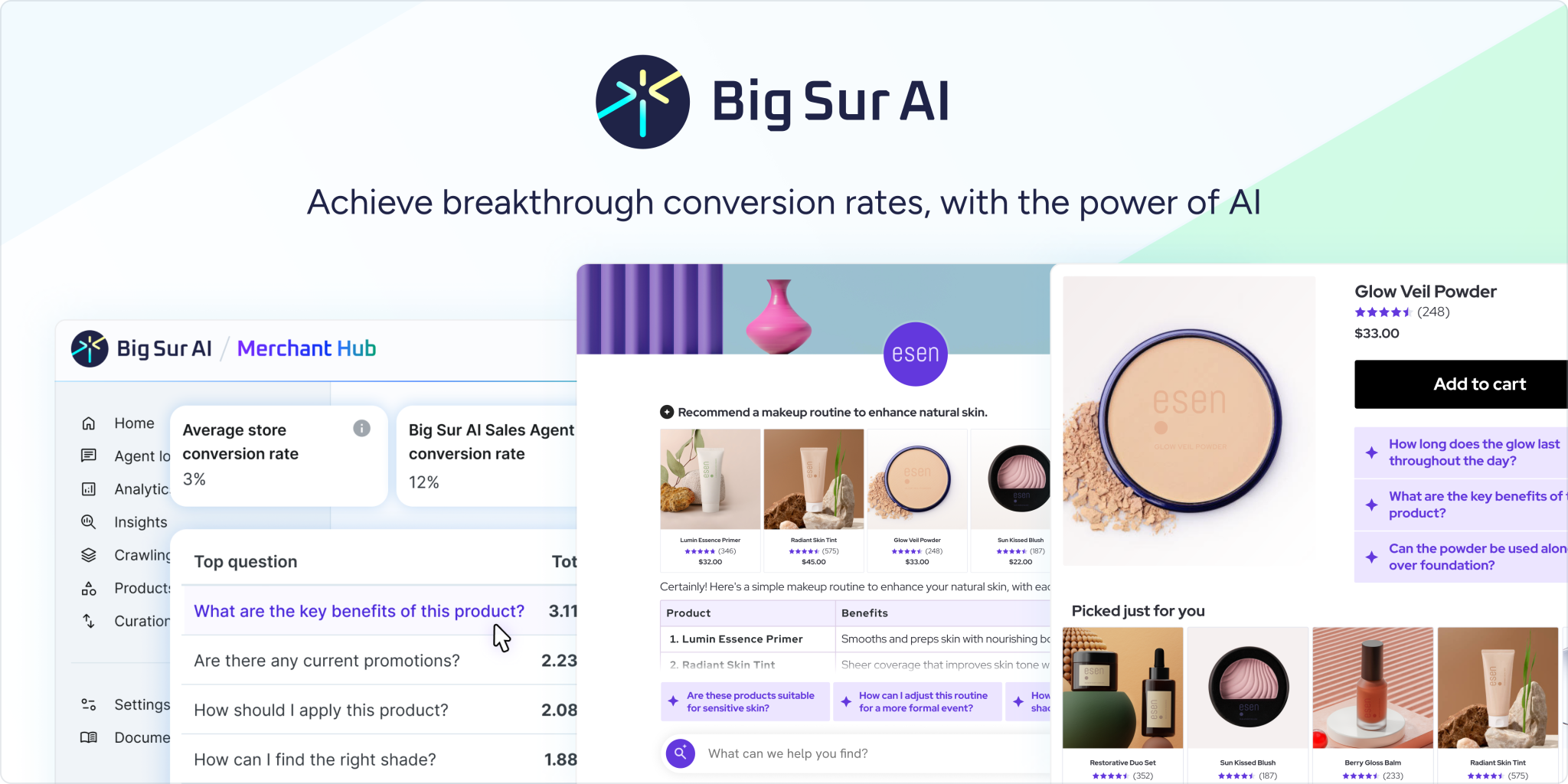
Company: Big Sur AI (E-commerce agent)
What it does: It provides a 24/7 real-time assisted shopping experience on e-commerce sites. It acts as a virtual, human-like sales agent who can answer specific questions in an entirely contextual manner.
2. AI support agent
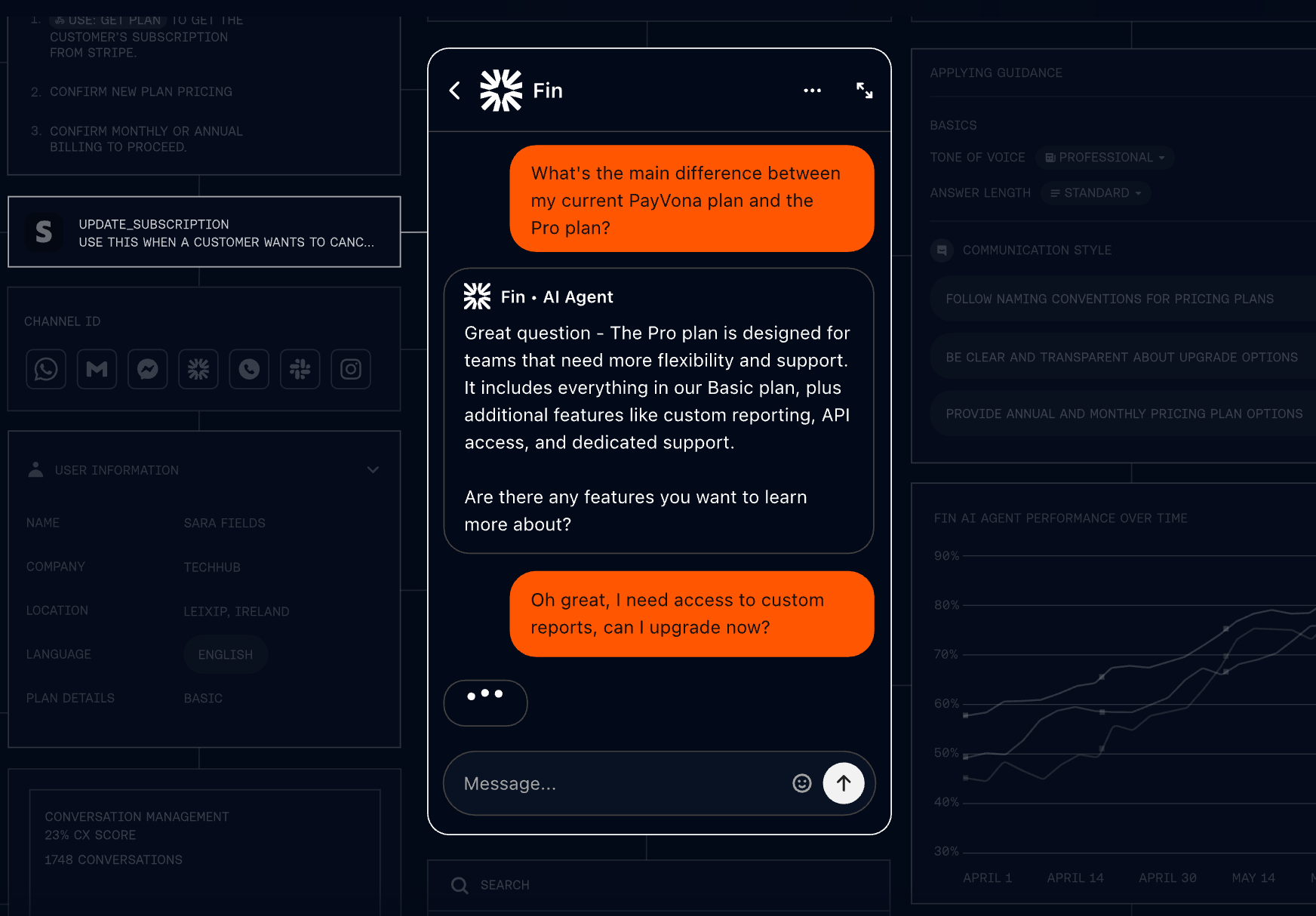
Company: Fin AI
What it does: Handle any customer support query in seconds by referencing internal documentation.
3. AI work agent

Company: Gamma
What it does: Create polished presentations, documents, and web pages without needing design or coding skills. You can start with a simple prompt or outline, and Gamma’s AI will generate visually appealing, ready-to-share content in minutes.
4. AI coding agent

Company: Lovable
What it does: Create applications and websites by providing plain English prompts, eliminating the need for manual coding.
5. AI assistant

Company: Google Gemini
What it does: Streamlines tasks across Gmail, Docs, Sheets, Calendar, Drive, and Meet. It can help you write and summarize emails, generate and edit documents, build spreadsheets with formulas and data insights, schedule meetings, and search or summarize files in Drive—even lengthy ones. Google Meet is also beginning to offer real-time summaries and action items.
6. AI knowledge worker
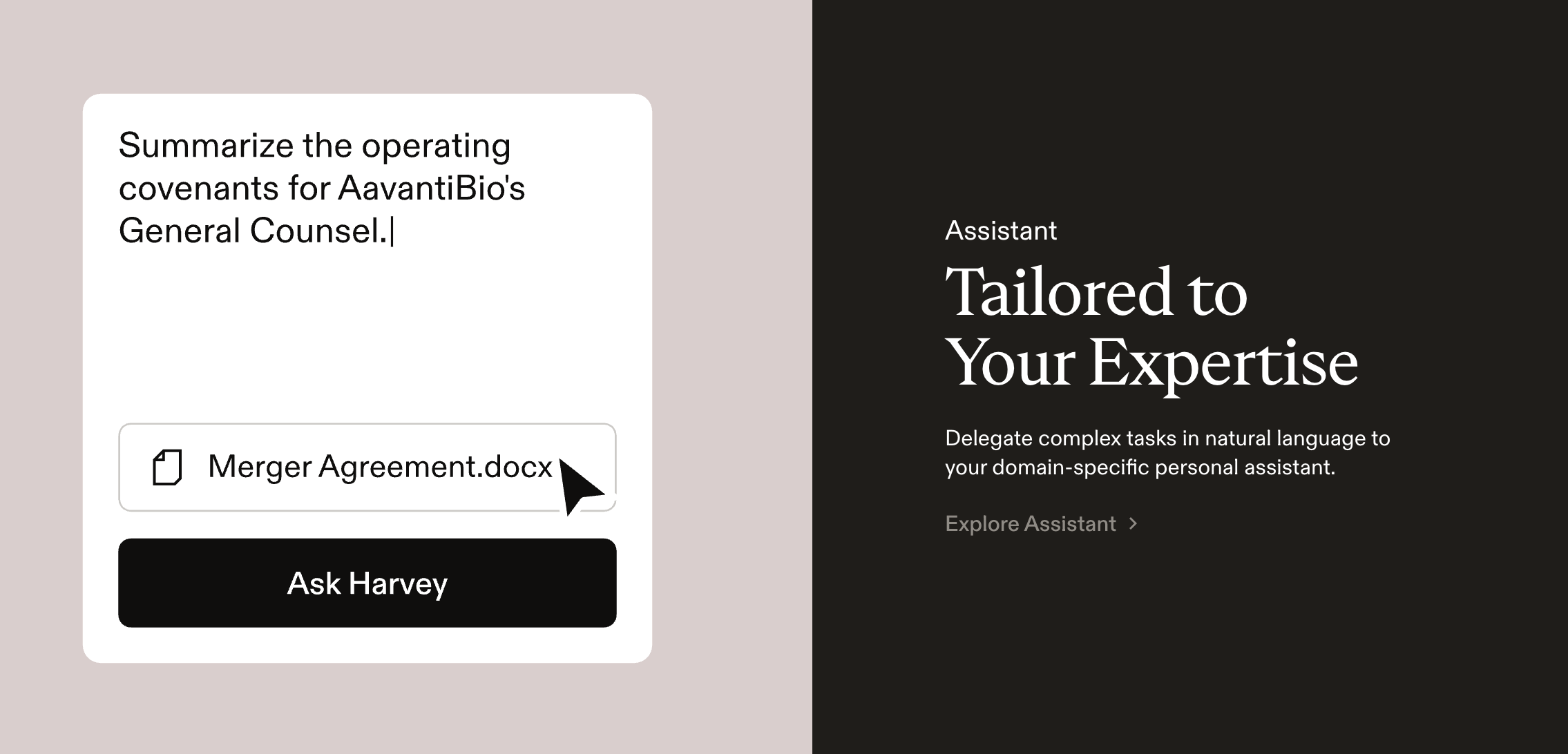
Company: Harvey.ai
What it does: Domain-specific AI that can read, review, and write legal documents.
7. Hospitality AI agent

Company: Connie by Hilton & IBM Watson
What it does: It perceives what guests ask, reasons about the best response (using Watson’s NLP), and provides helpful, real-time answers in a hotel lobby setting, reducing wait times and improving guest satisfaction.
8. Revenue optimization agents

Company: Relevance AI
What it does: Crunches large amounts of data to make dynamic pricing changes that maximize revenue.
9. User personalization agents

Company: Synthesis AI
What it does: For each prospect or user, Synthesis can create instant, tailored AI videos with personalized avatars & realistic voice-overs.
10. Trading agents

Company: XTX Markets
What it does: Uses AI-driven agents to make high-frequency and institutional trades across global markets. These agents operate with minimal human intervention, tuned for speed, precision, and adaptability.
11. Health agents
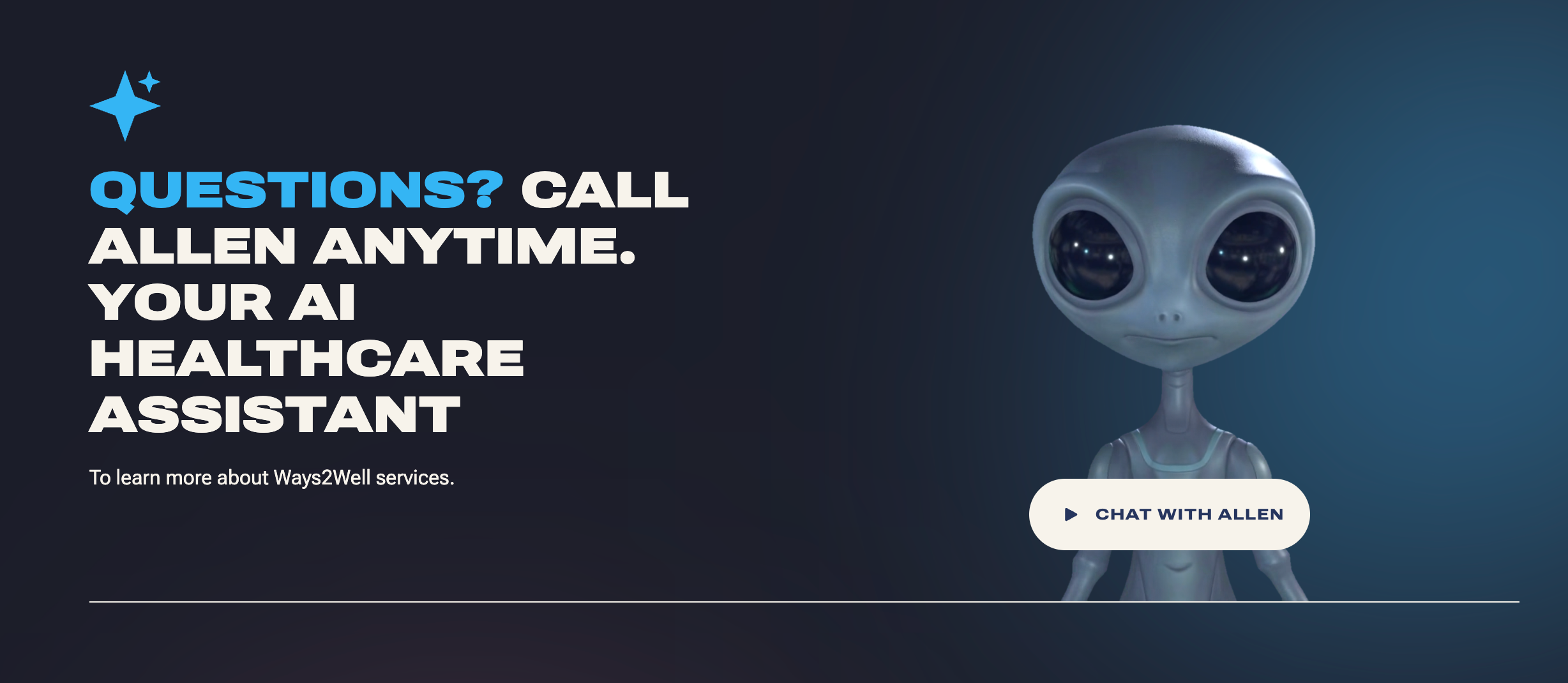
Company: Allen by Ways2Well
What it does: Can make an in-depth analysis of your health tests and give detailed recommendations, like which foods to avoid based on your blood results. Furthermore, it can assist in daily health-related situations and habits.
12. Autonomous vehicles
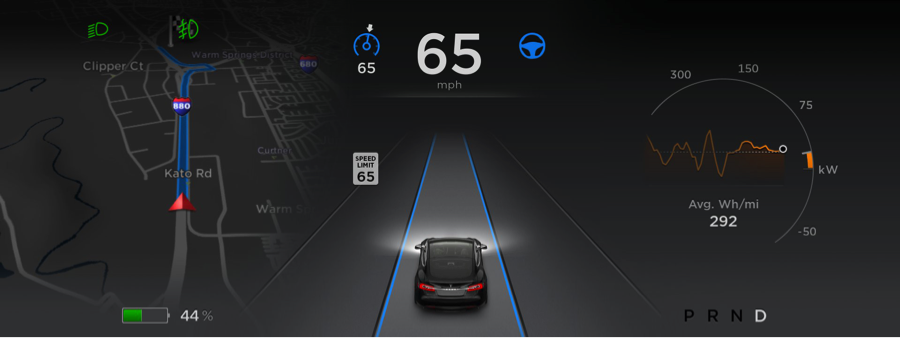
Company: Tesla
What it does: Tesla Autopilot is a driver-assistance system that helps with steering, accelerating, and braking within clearly marked lanes. It can maintain speed and distance in traffic, keep the car centered, change lanes automatically, park itself, and even navigate highway interchanges.
13. Robots

Company: Neuralink’s surgical robots
What it does: A surgical robot is a robotic system that assists surgeons in performing precise and minimally invasive procedures. It doesn’t replace the surgeon but acts as an extension of their hands, offering greater control, flexibility, and precision than traditional tools.
14. Infrastructure agents
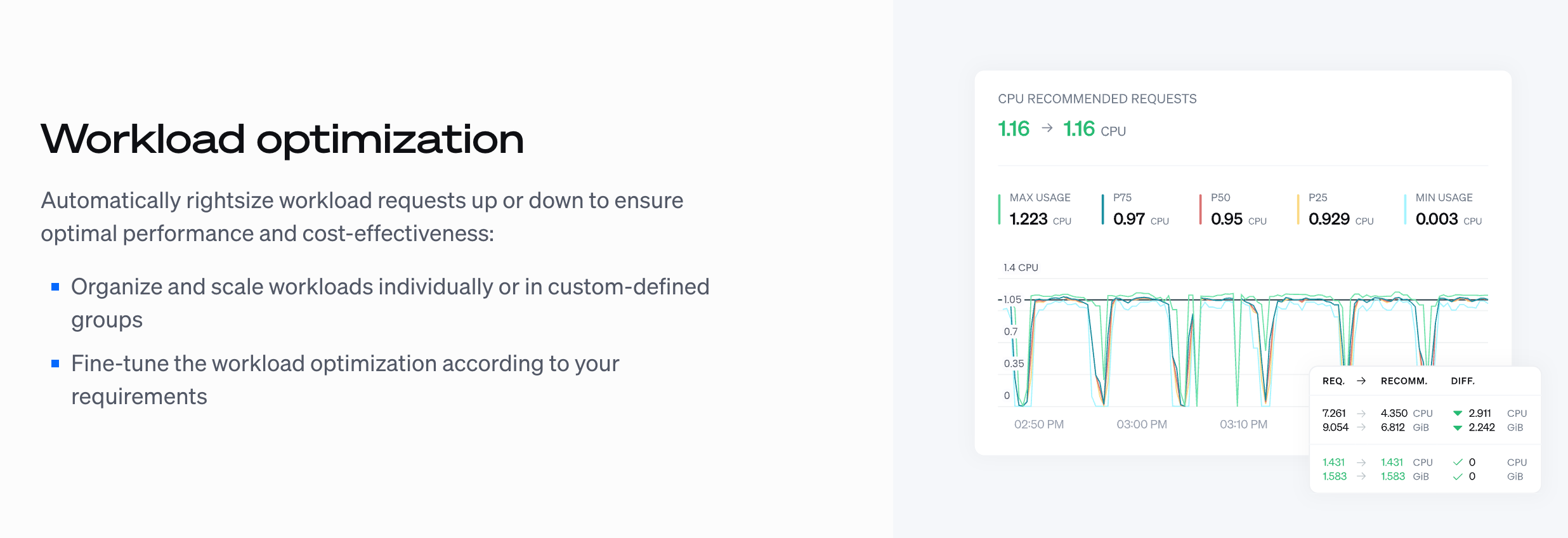
Company: Cast AI
What it does: Dynamically adjusts cloud resources like CPUs and GPUs, ensuring efficient performance and reduced software operating costs for companies.
15. Multi-agent systems

Company: Relay.app
What it does: A system of connected agents that talk to each other to handle the customer success function inside of Relay.app.
Next Steps: Launch your AI Chatbot with Big Sur AI in Minutes
- Sign up on Big Sur AI's Hub (link here).
- Enter your website URL. Big Sur AI will automatically analyze your site content.
- Customize your AI agent. Set up specific AI actions and decide where the AI agent will appear on your site.
- Launch and monitor. Your AI agent will be live in minutes, and you can track performance with real-time analytics.


